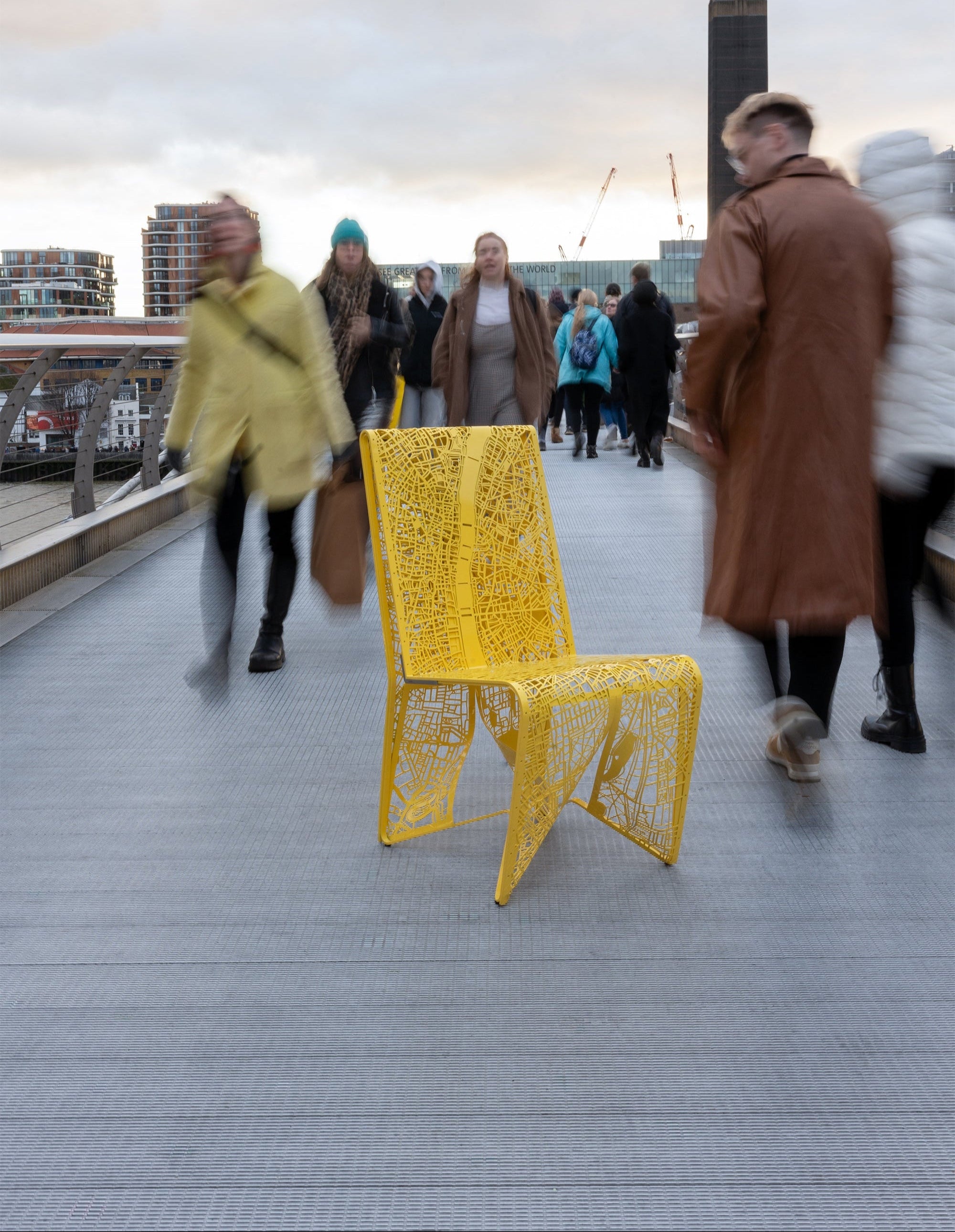Atlas Obscured Collection
YOUR CITY, YOUR STORY
Experience objects crafted from four layers of precisely drawn and laser cut maps, telling the story of a place, in modern form. In response to the question, "Can an object evoke a sense of place as strongly as a building does?" architect and furniture designer Ted Galante introduces the Atlas Obscured Collection. The collection was conceived to define a place, while also articulating its incessant evolution.

CHOOSE THE RIGHT SERIES FOR YOU
Work with us to have custom map layers traced for you, selecting your own location and dates for each layer. For wood chairs, select a location from a map for a custom tattoo. Choose your aluminum powder coat color or wood species and your Chair or Wall Map will be hand built for you.
Choose from our list of available cities, select your aluminum powder coat color or wood species and your Chair or Wall Map will be hand built for you.
Each prototype is unique. They are early design explorations and proofs of concept intended to be showcased as art pieces that represent the origins of this collection.
GALLERY
Where the Collection Has Been Featured
THE ORIGIN STORY
The Atlas Obscured Collection was conceived as a way to define a place and articulate its change over time. Each city's story is shaped by pivotal historical events and are visually expressed through the evolution of its maps.
The idea originated in 2016 when architect Ted Galante was designing outdoor seating for Harvard Square. Struck by the fact that Harvard University is 150 years older than the United States, he was compelled to express this idea in a way that tied each piece of furniture to the history of a place. While sketching concepts during a visit to the Tuileries Garden in Paris, he recognized the rich history embedded in the very place he sat. Yet, the chair beneath him was disconnected and uninspired from the gravity of his surroundings. Recalling Le Corbusier’s famous dictum, “Furniture is just architecture in miniature,” Ted wondered if a piece of furniture can be as much about placemaking as a piece of architecture? Ted was driven to create objects that would not simply exist in a space for people to use, but would also convey the identity of a place that brought meaning and conversation to its users.
Thus, the Atlas Obscured Collection was born, a series of furniture and objects that translate the storied history of cities into tangible form. For example, the original Harvard Square prototype features four map layers: present day, 1914, 1776, and 1636, each representing salient moments in the Square’s history.
By translating layers of history into physical form, the Atlas Obscured Collection invites users to experience a place as it has evolved over time. The result is not just furniture, it’s a sculpted narrative, merging object and context to tell the story of a place.
SEE THE STORY







































